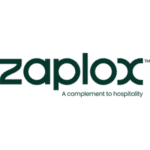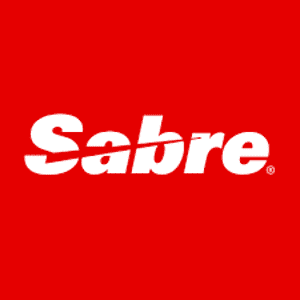
Having multiple properties doesn’t just mean big hotel groups. Even if your accommodation brand has only two locations, then it can already be considered multi-property and communication can become difficult to manage.
When you are in charge of guest communications for a multi-property hotel, it can be hard to stay on top of each location’s needs and send the right touchpoint at the right time. What normally happens:
- Messages are sent late
- Some touchpoints are skipped
- Guests receive the wrong information
- Guests complain about messages that never arrived
- Staff sends hundreds of messages manually and they are overwhelmed
If this situation sounds a bit familiar, this article is for you. Let’s dive into practices you can implement to transform your guest communication.
Get rid of platforms that are not helping
Do you often feel overwhelmed by all the tools and platforms available nowadays? We’re pressured to adopt the latest new technologies and trends and fear that we’ll fall behind if we don’t.
However, the truth is, sometimes simpler is better and owning multiple properties doesn’t necessarily mean you need a lot of systems to make it work.
Having multiple systems means each time there’s a new update or a system glitch, your staff needs to troubleshoot multiple systems simultaneously, which can lead to errors and delays in responding to guest queries.
Let’s say you’re currently using 5 platforms to manage your hotels at different locations. Instead of juggling 5 platforms, why not find one that handles at least 3 of your needs? By consolidating your tech stack, you ease the workload on your staff, which in turn can lead to quicker, more cohesive communication with guests.
The question now becomes: how do you decide which platforms are essential and which ones can be replaced or even ditched? You need to start by taking a fresh look and analyse your goals and needs.
Explore how to evaluate your current tech stack and what are 3 must-have softwares for your hotel.
Establish a source of truth everyone can have access to
Guests today, especially millennials and Gen Z who grew up immersed in technology, are becoming more tech-savvy when booking hotels. Therefore, they might reach out to you from different platforms, including social media, OTAs, WhatsApp, your website, and more.
Imagine a guest who books a room through your website for one location and sends a follow-up question via WhatsApp for another property.
Having 5 different communication platforms is great since you can contact guests through their preferred channel. However, if these communications are not centralised, the potential for mixed messages or dropped information is high.
Your staff may send repeated information that annoys guests, or important messages from guests can be easily missed. That’s why you need a unified inbox to manage all communication at one place.
With one single source of information, your staff can check guest requests without switching to another platform, allowing them to respond faster and more accurately. It’s also easier to monitor conversations to ensure follow-ups and accountability.
Get a general overview for your multi-property hotel
Mapping out the guest journey allows you to understand guest interactions from check-in to check-out at each of your properties and spot any communication gaps you may have. With a visual guest journey builder, you will know what’s being sent via which channel at each stage, so that no touch points can be missed.
Moreover, it enables you to better tailor communication to each property’s nuances. For example, at a resort property, the guest journey might include interactions that are more leisure-focused like spa appointments or activity bookings.
In contrast, a city-centre hotel might focus more on providing information about local business services or quick transportation options. Having a general overview ensures that your team is always sending the right message to the right audience at the right time.
If you don’t have a tech platform to help you with it now, you can still try to document everything with Google sheets and manually update it. Having regular catch-ups with your managers from each property can be useful too. Use this time to go over guest feedback, operational issues, and anything else that’s relevant.
Use technology to speed up personalisation
Are you trying to create personalised emails for every guest but worried that it might be too time-consuming for your team? Here, CRMs can be a game-changer. They usually have personalisation tokens and dynamic templates to simplify the process.
Personalisation tokens are dynamic fields that can be replaced with guest-specific data. For example, using a token such as {{FirstName}} in a welcome email template, the CRM system automatically inserts the individual guest’s first name so your staff don’t need to spend time looking for that information.
Dynamic templates are highly customisable email templates, allowing you to create unique emails tailored to your guests’ needs. Instead of writing everything from scratch for personalisation, your team can simply pull an existing template, let the personalisation tokens populate automatically, and then add any additional information.
Another challenge can be that even the same message can be written differently by different employees, or your company culture is not transmitted in the same way, etc., and technology can help you ensure consistent communication across properties.
Track key metrics in your guest communication
You can compare key metrics across different properties, and pinpoint where improvements are needed. Look for patterns or anomalies, for example, if guest communication scores are lower at one property, try to find out why. Is it due to staff training, the communication channels used, or maybe the cultural nuances of the local demographics?
Take some time to understand your data and your guests, how it varies from location to location, how the demographics and guest needs change, so that you can keep delivering excellent guest experiences.
Discover what some of the metrics are that you can track here.
Use automation to avoid bottlenecks
When you’re dealing with more properties under one brand, the complexity of managing guest communication increases greatly.
With each additional property, you are catering to guests with different needs and expectations. Tailoring messages to each location’s unique amenities, services, and local attractions can be incredibly time-consuming.
Moreover, as your brand grows, managing guest communication manually means a lot of repetitive work for your employees. This not only increases the workload but also raises the chance of human error.
That’s why it’s important to utilise automation if you have more than one property. For example, sending out booking confirmations, pre-arrival instructions, and check-out information can all be automated. This ensures that all your guests receive timely and consistent information, regardless of which property they’ve booked.
Discover how automation can help you in other areas of your hotel business here.
Adopt standardised employee training
When it comes to multi-property management, maintaining a uniform standard of service can be quite the challenge. One of the most effective ways to manage this is through standardised employee training. It ensures that every team member has the same set of skills and knowledge, so a guest will receive the same quality of service whether they stay in your downtown boutique hotel or your beachside resort.
Creating standard operating procedures (SOPs) can be the starting point. Guide your employees on handling bookings, guest requests, complaints, and emergencies professionally under all circumstances. And if you have locations internationally, understanding cultural nuances can be important in preventing misunderstanding.
To implement them effectively, having training sessions both at hire and periodically after is ideal. Furthermore, you can invite employees from different properties to train together or switch locations temporarily to understand your brand’s service across different contexts.
How Bookboost helps multi-property hotels
Ruby Hotels, a lean luxury hotel brand with 13+ properties in major European cities, partnered with Bookboost to better communicate with their guests.
With our multi-channel CRM, they’re able to communicate in a highly personalised way with each and every guest, providing an excellent digital service. They use Bookboost to maintain multi-channel communication and increase their conversions. They also use dynamic email templates and personalisation tokens to customise guest emails for every property without having to spend hours.
On the other hand, the unified inbox enables their staff to manage all guest messages at one place, ensuring the communication is always consistent and transparent.
Read more about what Ruby Hotels have achieved with Bookboost here.
Follow us on Linkedin to stay up to date with the new hospitality trends, and subscribe to our newsletter to get more tips and hacks for hotel marketing and operations.




















